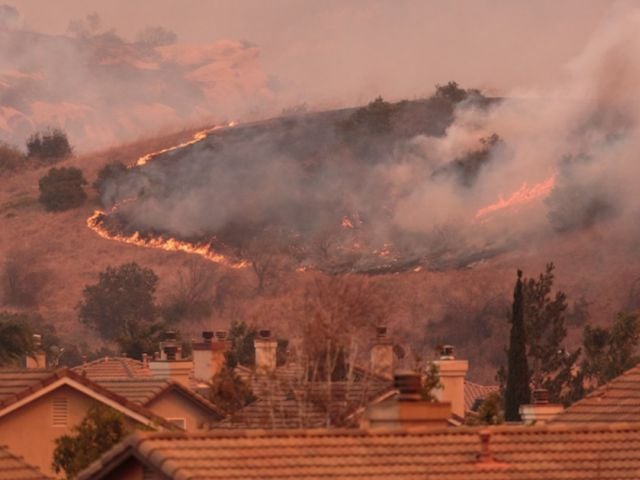
The toxic pesticide paraquat was mishandled at California farms, violating safety requirements, dozens of times between 2017 and 2022, an EWG investigation finds.
The investigation, based on state records of paraquat use violations, raises questions about the potential health risks to farmworkers applying the chemical, and to people living and working in communities near where it’s used. Long-term exposure to paraquat is linked with Parkinson’s disease, non-Hodgkin lymphoma, childhood leukemia and other harms.
Paraquat is an herbicide primarily used to clear fields before farmers plant corn, soybeans, cotton, almonds, peanuts, wine grapes, and other crops. The chemical can stay in soil for years, but when sprayed, paraquat can also drift through the air or linger in dust.
Paraquat is both acutely and chronically toxic – it can harm people both after a single exposure and after repeated, low-level exposures.
Despite the known health risks of exposure to this chemical, pesticide manufacturers and big agri-businesses argue it’s safe when used according to its label. The Environmental Protection Agency is responsible for dictating what pesticide labels must include about handling such products in the U.S.
Federal regulators have tightened restrictions on paraquat use, but EWG’s investigation shows that hasn’t stopped the dozens or more instances of it being mishandled in California. And each misuse of this deadly poison endangers people spraying paraquat or spending time near it.
EWG found that growers and spray companies often permit farmworkers to use the harmful chemical in ways that could endanger themselves and those around them. State records show that companies fail to provide emergency supplies for their workers, allow applications without the correct equipment, and even permit spraying by unqualified employees. EWG’s findings align with studies showing that off-label use is common.

A portion of the label for a pesticide containing paraquat. Note the warning to “read entire label” is translated into Spanish, but much of the text is only in English.
The 40 reported violations EWG found are almost certainly an undercount of the true number of times paraquat was mishandled in the state during the period studied. Pesticide misuse in general is likely underreported and underenforced.
The EPA assumes all paraquat is applied as directed, but EWG’s investigation shows this isn’t true. It is often mishandled, creating health and safety risks.
Serious health harms from just one exposure to paraquat are well known. Add to that the repeated violations of safe use directions despite very strict rules, and it’s clear that California must ban paraquat.
Waiting for the EPA to act on a nationwide ban will take too long, leaving farmworkers and rural Californians at risk. That’s why EWG is sponsoring Assembly Bill 1963 – legislation moving through the state Legislature that would make paraquat use illegal in the Golden State.
Link to serious illness and death
The link between chronic exposure to paraquat and Parkinson’s disease – a progressive brain disorder characterized by involuntary movements like tremors, stiffness and impaired balance – was first identified over 35 years ago. Since then, many other studies have connected the two.
Earlier this year, UCLA research determined that people living or working near the most intense paraquat applications in California’s Central Valley were also more likely to develop Parkinson’s.
That echoes a 2011 study using data from the National Institutes of Health that found farmworkers in Iowa and North Carolina who sprayed paraquat were two and a half times more likely to develop Parkinson’s. The longer they used the herbicide, the stronger the association.
A 2019 meta-analysis found that, across 13 different studies, occupational and environmental exposure to paraquat increased the risk of developing Parkinson’s by 64 percent.
Animal studies show how paraquat can damage human brains. Exposure to paraquat shows changes in behavior and overall motor function; a reduction in dopamine-producing neurons; and harmful malfunctions in the important brain protein alpha-synuclein.
All of these symptoms are hallmarks of Parkinson’s development in humans.
Paraquat is also acutely toxic – just one small dose can cause immediate serious harm. A person who ingests just a teaspoon can suffer extreme respiratory and gastrointestinal distress and organ failure, or even die.
Between 2016 and 2022, the National Poison Data System reported over 700 cases of U.S. paraquat exposure, mostly unintentional and several lethal. In one example, unused paraquat was stored in a Gatorade bottle, only to be accidentally consumed by an unaware 15-month-old boy who died in the hospital two weeks later from kidney and liver failure.
Because of these risks, paraquat is banned in nearly 70 countries.
The chemical also poses a considerable threat to the environment and wildlife. In its 2019 risk assessment of paraquat, the EPA identified serious harms to mammals and birds, as well as other species.
Dozens of use violations
EWG requested records from five California counties where paraquat is heavily used and found 40 instances of farmworkers handling it unsafely between 2017 and 2022, which put themselves and surrounding communities at risk of direct exposure.
Paraquat disproportionately threatens Hispanic farmworkers and rural residents.
A separate recent EWG analysis found that 5.3 million pounds were sprayed in California between 2017 and 2021, almost all of it in 10 rural counties with majority Hispanic populations.
Two-thirds – 66 percent – of all paraquat used in the state was sprayed in just five of those counties: Kern, Kings, Fresno, Tulare and Merced.
Most applications of paraquat happen without oversight: For every 20 sites identified in permits or notices of intent to spray a pesticide, California law requires monitoring of only one. If the pesticide company doesn’t submit a notice that spraying is imminent, the county has a slim chance of ever knowing about it.
Even that may be a generous estimate of how often pesticide use is monitored. County agricultural commissioner offices are frequently understaffed, and enforcement diligence varies greatly among counties. With minimal supervision, violations may be drastically undercounted.
Dangerous mishandling
Despite the EPA’s clear instructions for labeling and using paraquat, EWG’s investigation found a wide range of violations in California, from farm operators not giving workers adequate protective gear to haphazard field application of the chemical, which puts sprayers in harm’s way.
In Placer County, sprayers failed to wear protective equipment, which includes gloves, respirators, eye protection, sleeves, and a chemical-resistant apron. They had no medical supplies, such as clean water to wash their eyes, in case of emergency.
In Tulare County, an inspection found an employer who didn’t provide his workers with soap, protective gloves and glasses, or a change of clothes. Employers must tell employees where to find emergency care, but the inspector couldn’t read his handout.
In Kings County, an inspector found handlers took a dangerous approach to loading the chemical into the machinery: partially filled containers were open on the field. Paraquat should be loaded in insulated tubing, but the handlers didn’t know this and poured the chemical into a truck tank by hand. And they had not passed the required medical training. When the spray company’s owner came to the site, he was confused about the fact that his workers had to be licensed or take an EPA-approved training in order to mix and apply paraquat to the fields.
Stories of paraquat mishandling extend beyond California, according to records from the National Pesticide Information Center.
A woman in Hawaii reported exposure from a nearby farm’s paraquat drift. In Oregon, a man reported damage from pesticide drift to thousands of trees across hundreds of acres set aside for conservation. A couple in North Carolina suffered coughing fits after leaving windows open in their home, unaware that a neighboring farm was spraying paraquat. One man in an unknown state accidentally stepped in a puddle of the chemical while barefoot and reported painful swelling.
All of these dangers are avoidable – farming is still productive and profitable in the 60-plus countries that have banned its use, as one study shows. There’s no need to keep exposing farmers and people living and working in nearby communities to this toxic chemical.
Strict restrictions are being ignored
EWG’s analysis suggests the EPA is underestimating paraquat exposures. The agency has a history of taking action on this herbicide only when people are harmed by it.
Paraquat has been used as an herbicide for over six decades. In 2011, at the beginning of a review of the chemical, the EPA noted dozens of occupational incidents of exposure.
In 2016, the EPA proposed new guardrails, including label changes and mandatory training. Further evaluation of paraquat’s potential to cause occupational harm prompted the agency to announce even stricter regulations in 2021, including 10 new mitigation measures. These include:
- Limit aerial applications to a maximum of 350 acres per applicator per 24-hour period for all uses except cotton.
- Require a residential area drift buffer for all aerial applications.
- Prohibit the use of human flaggers, who help mark areas where pesticides are applied.
- Limit the single application maximum rate for alfalfa.
- Require enclosed cabs for applications to more than 80 acres in a 24-hour period.
- Require PF10 respirators or enclosed cabs for applications to 80 acres or less in a 24-hour period.
- Ban the use of mechanically pressurized handguns and backpack sprayers.
- Require a 48-hour restricted entry interval for all crop uses except for cotton.
- Require a 7-day restricted entry interval for cotton.
- Require spray drift management measures.
Even with these or future additional safety restrictions, paraquat will never be completely safe to use. The only safe solution is an outright ban, and Californians’ health can’t afford to wait.

“Safe” loading of paraquat requires full body protection and insulation. Source: AgNet Media
California must ban paraquat
Farmworkers putting food on our tables deserve better than to be exposed to toxic chemicals like paraquat. They already face many dangers on the job, such as extreme heat, airborne illness and, of course, other harmful pesticides.
Paraquat is an unnecessary risk. Despite extensive safety requirements, trainings, and warnings about its use, EWG’s investigation shows that the pesticide is often mishandled and still proves hazardous.
Big agri-business claims paraquat is safe, but science isn’t on their side. Mistakes and accidents happen, putting many people’s health on the line.
The solution is banning paraquat entirely, which can be done without hurting farms’ profitability. California lawmakers have a live opportunity to achieve this goal, by passing A.B. 1963 through the state Senate and sending it to Gov. Gavin Newsom to sign into law.






